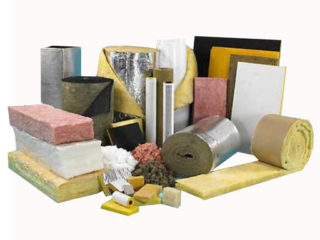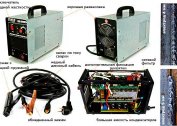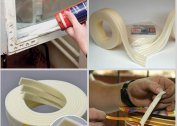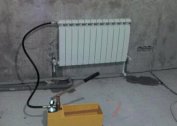Thermal insulation is an important stage in home decoration. It allows the room to retain heat longer, which leads to lower heating costs. Warming is done at the construction stage (for example, when isolating the foundation) or during repair work (ceiling, walls). To create insulation, different materials are used with their own properties, features and application conditions.
Features of heaters
A heat insulator is a material that has low thermal conductivity and protects the room from heat loss. It is used for insulation of residential and non-residential buildings. The bath and sauna use heat-resistant high-temperature materials for furnaces. It is better to choose a waterproof insulation, so that waterproofing is not required.
The range of insulation materials is wide. They differ in their composition, structure, thermal conductivity, vapor and waterproofing properties, and application conditions. With their help, you can insulate the floor, ceiling, pipeline, building facade and other important parts of the house. A prerequisite is that a material that does not allow heat to pass outside must have a low level of thermal conductivity. The determination of the appropriate type depends on the conditions of use and the type of surface to be insulated.
Styrofoam

The most famous inorganic insulation is foam. This is an inexpensive material with high efficiency, which is usually used in wall insulation. Positive features include:
- Low cost. The cost of manufacturing thermal insulation is minimal, and it requires less than other heat insulators.
- Ease of installation.
- Universality. Suitable for thermal insulation of different parts of the house.
- High efficiency.
- Low coefficient of thermal conductivity.
- Practically does not absorb moisture.
- Good sound insulation.
- Resistant to alcohols, alkalis.
- It is ecologically safe.
The foam has a vapor permeability coefficient of 0.05 mg. It is operated at temperatures from -60 ° C to + 80 ° C. It has a cellular structure and does not absorb liquid well.
Disadvantages:
- Flammability. At the industrial production stage, ingredients that increase refractoriness are added to the insulation foam, but it is still considered combustible.
- Deformation of characteristics during prolonged exposure to temperatures above 80 ° C. It is not recommended to put in baths and other buildings with a high temperature.
- Rodents can damage the insulation.
Despite its shortcomings, polystyrene has established itself as a high-quality insulation for homes and summer cottages. Thermal insulation sheet material is used for walls and floors. The roll form is used for pipes.
Penoplex
Materials for thermal insulation are known as foam, expanded polystyrene, expanded polystyrene, extruded polystyrene. It is a foam with improved characteristics.
The structure of the material is finely meshed, so that its strength is higher than that of the foam. It will also differ in other characteristics.
Main advantages:
- High degree of durability. It does not deform under loads, while the plates are easy to cut with a knife.
- Environmental friendliness.
- Resistance to fungus formation. The material is not exposed to rodents.
- Low vapor permeability.
- Duration of operation. Shelf life is 50 years.
- Belongs to the number of materials with low thermal conductivity.
There are different types of foam used to insulate facades, foundations, roofs, walls in a house or bathhouse.
Glass wool
Thermal insulation material consists of sand and glass raw materials, which are drawn into thin fibers under the influence of high temperatures. It is sold in mats and rolls and can be used for insulation of vertical and horizontal surfaces.
Benefits:
- Availability. Due to its low cost, the polymer remains in demand.
- Convenience of transportation and use.
- Easy to cut.
- Safety. If you take into account the nuances when laying materials, there will be no difficulties.
- Lack of rodents.
- Incombustibility.
- Soundproofing.
Disadvantages:
- Fragility.
- The need for personal protective equipment when working with material. The specialist must have glasses, a respirator and tight rubber gloves, otherwise work is prohibited.
- Thermal conductivity. Other types of thermal insulation are of lower value.
Glass wool is usually used in the insulation of floors and ceilings. Also sometimes used for wall decoration.
Mineral wool
The heat insulator is also known as basalt, stone, mineral wool. One of the distinguishing features of the material is safety in use.
It has a thermal conductivity coefficient of 0.077-0.12 W / m * K. It is considered one of the best heat insulators in its characteristics.
Benefits:
- The absence of harmful substances in the composition. Environmentally friendly and organic heat insulator.
- Withstands prolonged exposure to high and low temperatures.
- Not susceptible to infection by fungus, mold.
- Not subject to burning. The fibers of the product melt, but no further spread of fire occurs.
- It is used in the insulation of any buildings at any stage of construction, decoration or operation.
The disadvantages include the need to erect false walls. Without it, it is impossible to lay insulation. Insulating stone wool is also expensive.
The laying thickness in the middle lane is 15-20 cm, and in the warm southern regions - up to 10 cm.
Polyurethane foam
The composition of the insulation is polyester with the addition of water, reagents and emulsifiers. Insulation properties:
- The coefficient of thermal conductivity of 0.019-0.028 W / m * K.
- The method of application is spraying. Requires the purchase of additional equipment for installation.
- Light weight, which does not exert additional pressure on the structure.
The benefits include:
- Easy to install. The use of fasteners and additional accessories is not required.
- Duration of operation.
- Resistance to low and cold temperatures, precipitation.
- Environmental safety for humans and the environment.
- Corrosion protection of metal structures.
Polyurethane foam can be used on any surface, even on glass, wood, plastic and painted walls. It is important to protect the material from direct sunlight.







